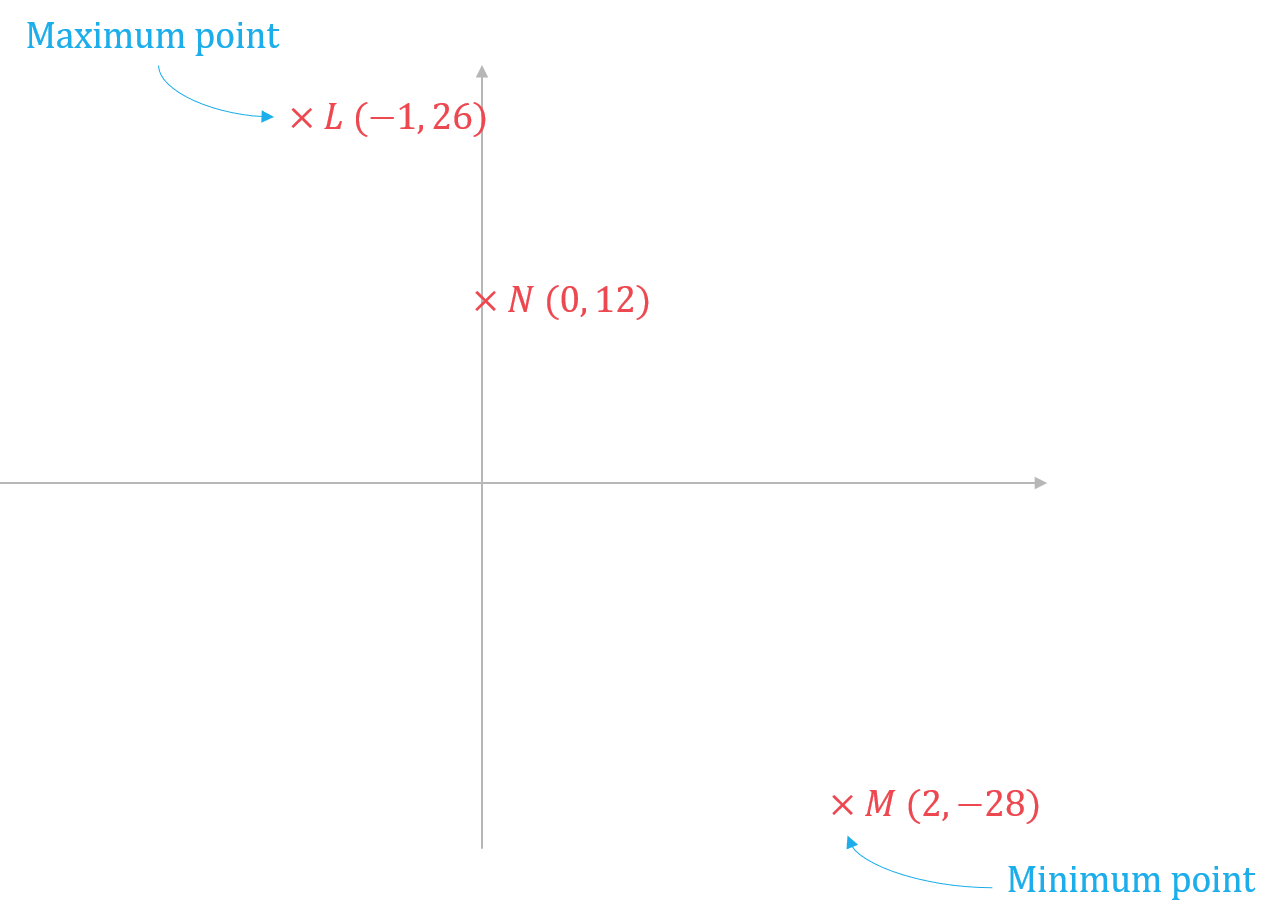Quadratic Graphs
A quadratic is a function of the form where
is not zero
They are a very common type of function in mathematics, so it is important to know their key features
What does a quadratic graph look like?
- The shape made by a quadratic graph is known as a parabola
- The parabola shape of a quadratic graph can either look like a “u-shape” or an “n-shape”
- A quadratic with a positive coefficient of
will be a u-shape
- A quadratic with a negative coefficient of
will be an n-shape
- A quadratic with a positive coefficient of
- A quadratic will always cross the
-axis
- A quadratic may cross the
-axis twice, once, or not at all
- The points where the graph crosses the
-axis are called the roots
- The points where the graph crosses the
- If the quadratic is a u-shape, it has a minimum point (the bottom of the u)
- If the quadratic is an n-shape, it has a maximum point (the top of the n)
- Minimum and maximum points are both examples of turning points

How do I sketch a quadratic graph?
- We could create a table of values for the function and then plot it accurately, however we often only require a sketch to be drawn, showing just the key features
- The most important features of a quadratic are
- Its overall shape; a u-shape or an n-shape
- Its
-intercept
- Its
-intercept(s), these are also known as the roots
- Its minimum or maximum point (turning point)
- If it is a positive quadratic (
in
is positive) it will be a u-shape
- If it is a negative quadratic (
in
is negative) it will be an n-shape
- The
-intercept of
will be
- The roots, or the
-intercepts will be the solutions to
;
- You can solve a quadratic by factorising, completing the square, or using the quadratic formula
- There may be 2, 1, or 0 solutions and therefore 2, 1, or 0 roots
- The minimum or maximum point of a quadratic can be found by;
- Completing the square
- Once the quadratic has been written in the form
, the minimum or maximum point is given by
- Be careful with the sign of the x-coordinate. E.g. if the equation is
then the minimum point is
but if the equation is
then the minimum point is
- Using differentiation
- Solving
will find the
-coordinate of the minimum or maximum point
- You can then substitute this into the equation of the quadratic to find the
-coordinate
Worked example
a)
Sketch the graph of showing the
and
intercepts
It is a positive quadratic, so will be a u-shape
The at the end is the
-intercept, so this graph crosses the
-axis at (0,6)
Factorise
Solve
So the roots of the graph are
(2,0) and (3,0)

b)
Sketch the graph of showing the
-intercept and the turning point
It is a positive quadratic, so will be a u-shape
The at the end is the
-intercept, so this graph crosses the y-axis at
(0,13)
We can find the minimum point (it will be a minimum as it is a positive quadratic) by completing the square:
This shows that the minimum point will be
(3,4)
As the minimum point is above the -axis, this means the graph will not cross the
-axis i.e. it has no roots
We could also show that there are no roots by trying to solve
If we use the quadratic formula, we will find that is the square root of a negative number, which is not a real number, which means there are no real solutions, and hence no roots

Sketch the graph of showing the root(s),
-intercept, and turning point
It is a negative quadratic, so will be an n-shape
The at the end is the
-intercept, so this graph crosses the
-axis at (0, -4)
We can find the maximum point (it will be a maximum as it is a negative quadratic) by completing the square:
This shows that the maximum point will be
(-2, 0)
As the maximum is on the -axis, there is only one root
We could also show that there is only one root by solving
If you use the quadratic formula, you will find that the two solutions for are the same number; in this case -2








